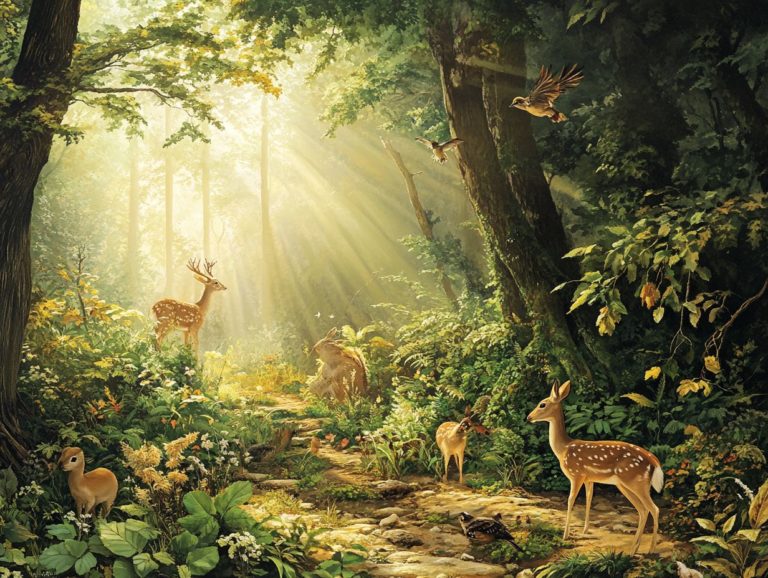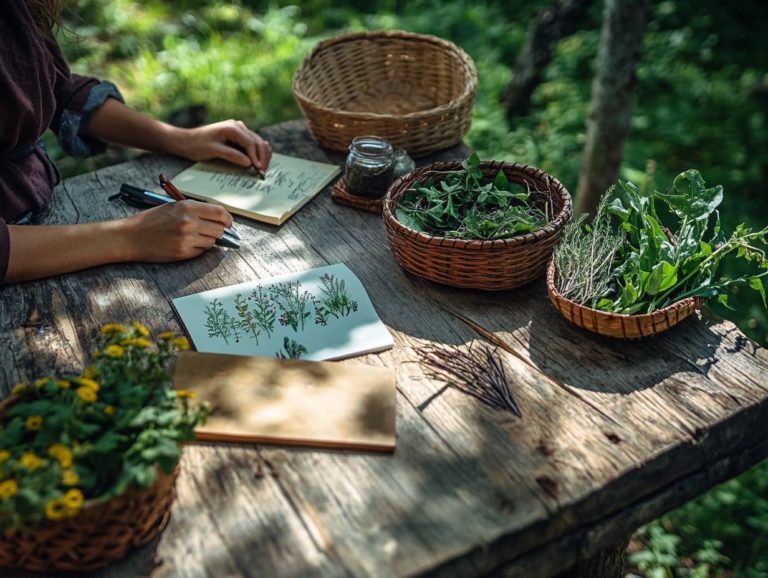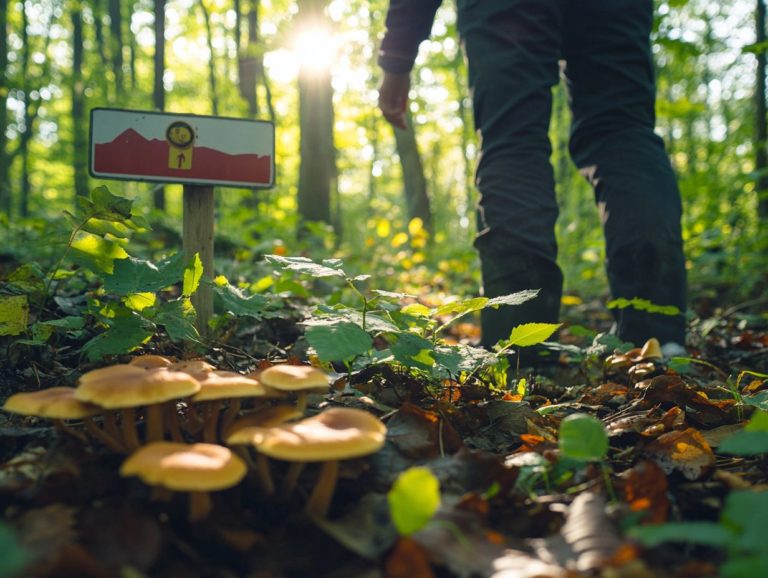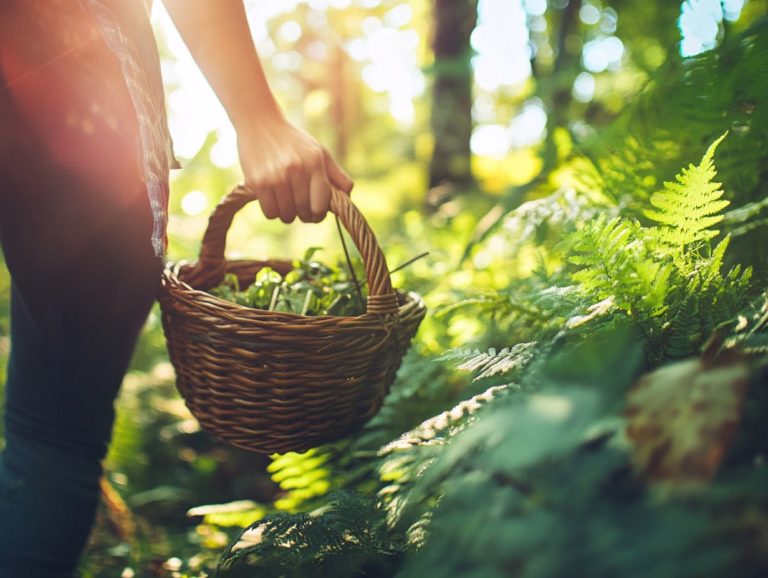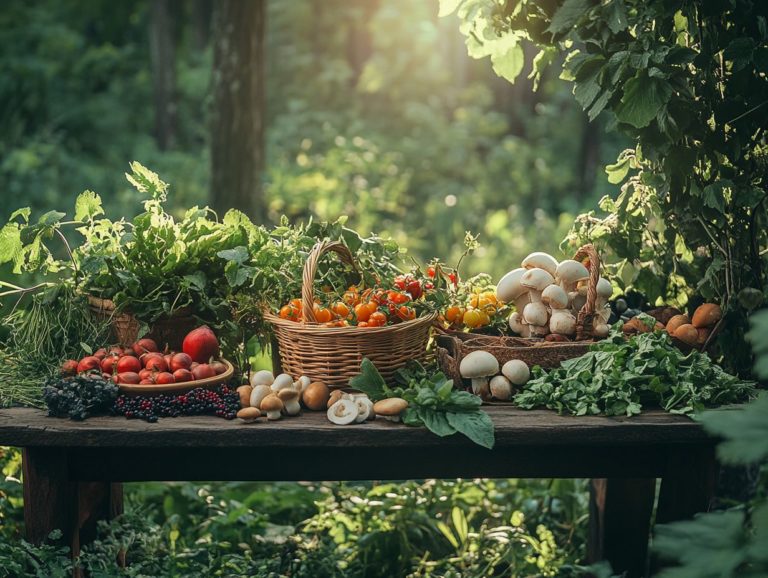How to Create a Foraging Plan that Protects Nature
Foraging presents a unique opportunity to connect deeply with nature while reveling in the rich bounty that the outdoors has to offer. It s crucial to approach this practice with care and respect for the environment. Emphasizing the importance of environmental stewardship is key.
This article delves into the significance of sustainable foraging. You ll learn essential steps such as crafting a foraging plan, familiarizing yourself with local regulations, and identifying edible plants and mushrooms. This includes gathering plants from the wild for food or medicine, as well as herbal remedies.
Discover how to forage responsibly. Ensure that nature flourishes even as you savor its gifts through safe foraging practices. Whether you re just starting out or you have years of experience, there s valuable insight here for everyone.
Contents
- Key Takeaways:
- Why Sustainable Foraging Matters
- Creating a Foraging Plan
- Foraging for Edible Plants and Mushrooms
- Foraging for Wild Game and Fish
- Responsible Foraging Practices
- Frequently Asked Questions
- What is foraging and why is it important to protect nature?
- How do I determine what is safe to forage?
- How can I create a foraging plan that protects nature?
- What are some sustainable foraging practices?
- How do I minimize my impact while foraging?
- What are some alternative ways to forage that protect nature?
Key Takeaways:
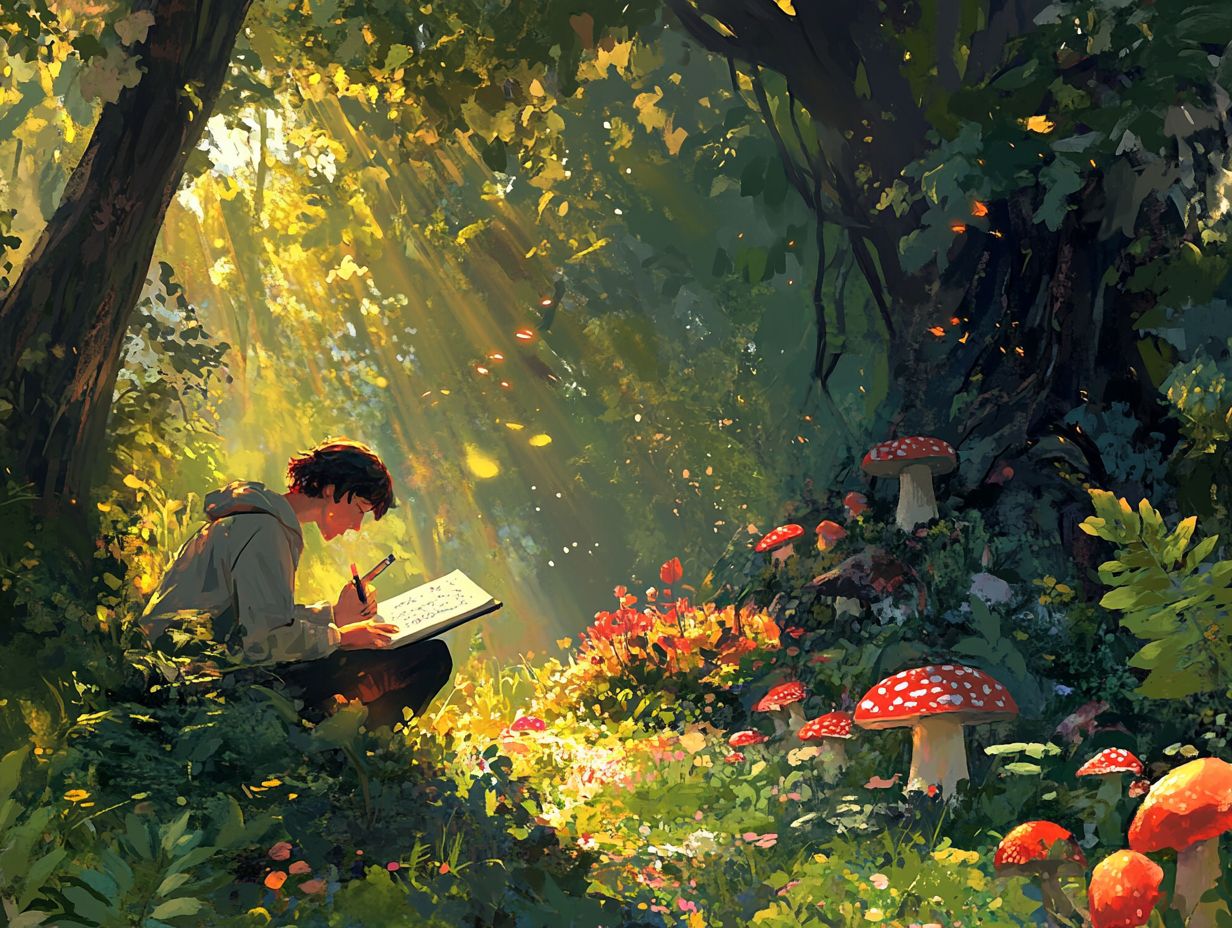
- Understand the impact of foraging on nature and the importance of sustainable practices.
- Research and follow local regulations before foraging.
- Prioritize safety and leave no trace to protect nature for future generations.
Why Sustainable Foraging Matters
Sustainable foraging plays a crucial role in preserving biodiversity and nurturing community connections. It also addresses the pressing climate emergency through the use of indigenous knowledge. By engaging in the ethical harvesting of native plants, you’ll make a positive difference in the environment, aid in the restoration of local ecosystems, and cultivate a profound appreciation for indigenous knowledge and practices surrounding wildcrafting.
This approach highlights the importance of plant conservation. It enriches community gardens, supports urban foraging, and deepens your relationship with the natural world.
Understanding the Impact of Foraging on Nature
Foraging profoundly influences nature, shaping local ecosystems and the lifecycle of plants in both beneficial and detrimental ways. This largely hinges on the methods you choose to employ.
When approached with care, foraging can enhance biodiversity by fostering the growth of native plants. This enriches local food webs and supports a variety of wildlife species. However, it’s crucial to be aware of the potential pitfalls. Taking plants without respecting local knowledge and rights poses serious threats to community connections and food deserts. Additionally, understanding seasonal foraging techniques is essential, as overharvesting certain species can disrupt their populations and jeopardize their survival.
To navigate these challenges, it s vital to educate yourself on plant cycles and seasons. This ensures that your foraging endeavors remain sustainable. By emphasizing responsible practices, you can fully enjoy the pleasures of foraging while preserving the ecological integrity of the environments you explore.
Creating a Foraging Plan
Crafting a foraging plan demands a strategic mindset. You’ll want to pinpoint suitable locations through scouting trips. Grasp the nuances of seasonal harvesting and ensure you are fully compliant with regulations governing foraging on both public lands and private property. Additionally, it’s beneficial to learn how to use foraging as a tool for conservation to enhance your efforts.
This journey involves honing your plant identification skills and deepening your understanding of local ecosystems. It s also important to familiarize yourself with the requirements for foraging permits, as well as understanding the process of permitting foraging and seasonal harvesting licenses.
Start planning your foraging adventure today!
Identifying Local Regulations and Guidelines

Familiarize yourself with local regulations and guidelines to ensure ethical foraging practices. These rules dictate what you can harvest and where, especially regarding public lands and private property, and they address the implications of cultural appropriation.
Discover the various foraging permits you need to gather wild edibles! These permits define what you can collect while playing a crucial role in protecting local ecosystems. By enforcing limits on quantities and timing, they ensure your foraging activities don t disrupt natural habitats or threaten specific species, supporting environmental activism.
Local knowledge is invaluable in navigating these regulations. Seasoned foragers often have insights into best practices and the region’s ecological conditions.
Engaging with community members can lead to sustainable harvesting methods that promote environmental stewardship, share knowledge about food foraging, and allow you to enjoy nature’s bounty.
Choosing Sustainable Foraging Practices
Choose sustainable foraging practices to help keep our ecosystems healthy and thriving! Learning how to forage responsibly is vital for maintaining ecological balance, promoting plant conservation, and ensuring adherence to ethical guidelines.
By embracing seasonal harvesting, you gather plants at their peak, fostering their regeneration and health. This approach honors the life cycles of various species and enhances the overall diversity of the ecosystem, contributing to local resilience.
Leaving no trace after foraging is essential for minimizing human impact on natural habitats. Ethical considerations like understanding local regulations and respecting the rights of private landowners are significant for your foraging sustainability.
Engaging in these mindful practices deepens your connection with nature, ensuring that future generations can enjoy and benefit from the bounties of the wild.
Foraging for Edible Plants and Mushrooms
Foraging for edible plants and mushrooms requires a deep understanding of plant identification, safe foraging practices, and effective harvesting techniques. This knowledge is essential to ensure you collect nutritious and safe food sources.
The art of foraging is not merely about gathering; it s about developing skills that enhance your experience and connect you with nature s bounty.
Identifying and Harvesting Safely
Identifying and harvesting plants safely is crucial for you as a forager. It helps you avoid harmful look-alikes and ensures you’re collecting only edible or medicinal plants while understanding plant toxicity.
Understanding the nuances of plant characteristics and using field guides can truly make the difference between a rewarding gathering and a potential health scare. Many plants have toxic relatives, so thorough research, attending foraging classes, and using field guides are essential in your toolkit. Observe specific features like leaf shape, flower color, and stem texture to differentiate between friend and foe.
For safe harvesting techniques, using gloves and shears minimizes damage to the plants, while a sustainable approach ensures you re not overharvesting.
Consider participating in local workshops, foraging classes, or guided foraging sessions. These experiences can significantly enhance your skills and boost your confidence in plant identification.
Foraging for Wild Game and Fish
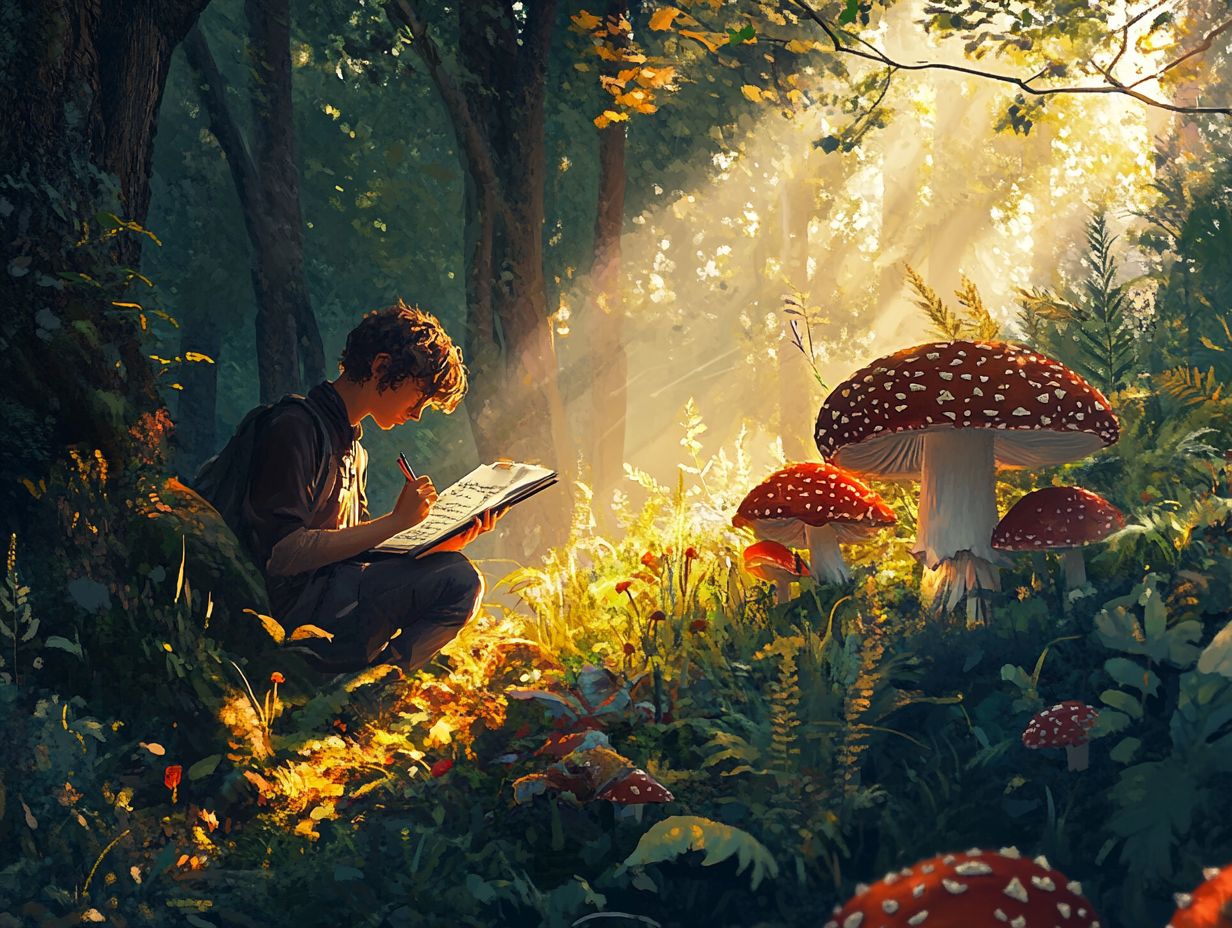
Foraging for wild game and fish demands a solid grasp of seasonal restrictions, hunting regulations, and the importance of respecting private property. This knowledge ensures that you engage in ethical and sustainable practices, allowing for a respectful coexistence with nature and its resources.
Get started on your foraging adventure today! Explore local regulations and engage with your community to learn more!
Understanding Seasonal Restrictions and Limits
Understanding seasonal restrictions and limits is crucial for responsible foraging practices. These guidelines are crafted to protect wildlife populations and ensure the sustainability of ecosystems.
By following these restrictions, you actively contribute to the health of local environments. This allows wildlife populations to reproduce and flourish. Take fish spawning seasons, for example; they dictate when you can legally fish for specific species. This helps prevent overfishing and maintain balanced aquatic ecosystems.
Hunting seasons work similarly. They take into account animal mating patterns and population dynamics. This alignment ensures that wildlife management practices adhere to ethical foraging principles and promote reciprocity with nature. Your commitment to these guidelines demonstrates respect for natural resources and champions a sustainable approach to outdoor enjoyment.
This fosters a deeper connection to nature while securing its future for generations to come.
Responsible Foraging Practices
Practicing responsible foraging is essential for preserving ecological integrity. It promotes foraging ethics and fosters a deeper connection within the community. By prioritizing environmental stewardship and adhering to foraging ethics, you contribute to the health of the ecosystem while enriching your own experiences in nature.
Leaving No Trace and Protecting the Environment
Leaving no trace is a core principle in responsible foraging. It is designed to minimize your environmental impact and encourage sustainable practices that support plant conservation.
By adopting this mindset, you re prompted to plan ahead. Choose only areas that are thriving and healthy. Consider the impact of herbicides and pesticides, which helps maintain the balance of ecosystems.
It s crucial to familiarize yourself with the local biodiversity, which refers to the variety of life in a particular habitat, the seasonal cycles of the plants you re foraging, and their significance in food deserts. For instance, utilizing tools that minimize ground disturbance and being mindful of your path can safeguard delicate habitats.
When you practice ethical harvesting, you respect nature and its resources. Only take what you need and ensure there’s enough left for wildlife and future growth. This reinforces your commitment to environmental stewardship.
Engaging in these mindful practices benefits the ecosystem and deepens your connection to nature. It nurtures a profound respect for the land and its resources.
Frequently Asked Questions
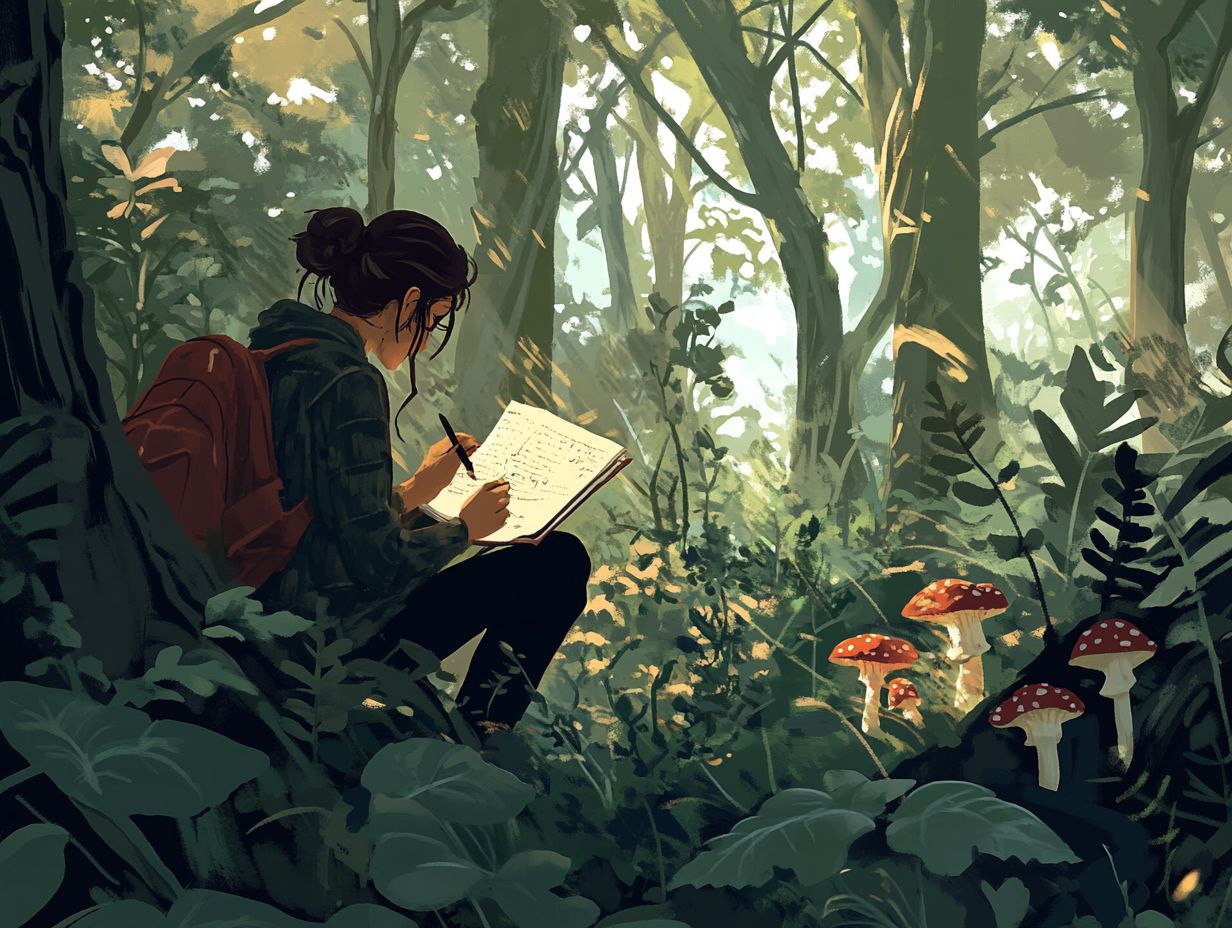
What is foraging and why is it important to protect nature?
Foraging is the act of gathering food from the wild, such as berries, nuts, or mushrooms. It is important to protect nature because foraging can have a significant impact on the environment if not done responsibly. Learning how to use local resources for sustainable foraging ensures the sustainability of foraging for future generations.
How do I determine what is safe to forage?
It is important to properly identify and research the plants and fungi in your area before foraging. Look for a reliable guidebook or take a foraging course to learn about the edible and non-edible species in your region. It is also helpful to forage with an experienced forager for guidance and safety.
How can I create a foraging plan that protects nature?
Start by understanding the laws and regulations regarding foraging in your area. Then, choose a specific location and research the types of plants and fungi that grow there. To ensure you are foraging responsibly, follow guidelines on protecting nature and sustainable foraging techniques. Create a plan to only take what is needed and leave enough for other foragers, animals, and the ecosystem to thrive.
What are some sustainable foraging practices?
Sustainable foraging practices include only harvesting what is needed, foraging in different locations to avoid over-harvesting, and leaving some plants and fungi to reproduce and support the ecosystem. It is also important to take note of endangered or protected species and avoid foraging them.
How do I minimize my impact while foraging?
Be mindful of your surroundings and forage with care. Use proper tools, such as a knife or scissors, to avoid damaging plants and trees. Be respectful of the environment and leave no trace by properly disposing of any trash or waste.
Avoid foraging in sensitive areas, such as protected habitats or private property.
What are some alternative ways to forage that protect nature?
Why not grow your own food in a garden or join a community garden? This way, you get an eco-friendly source of fresh produce.
By doing this, you protect natural areas. Plus, you can support local farmers and businesses that practice eco-friendly and ethical farming instead of foraging in the wild.


